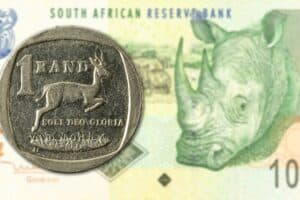The confirmed US tariff on South Africa that will apply from 7 August is bad news for the South African economy, rand and jobs.

After the White House announced new tariffs on exports into the US, many countries could heave a sigh of relief, but unfortunately, South Africa was not one of them, with a 30% tariff. The rand fell to its lowest level in three months, while thousands of jobs are in danger.
In the early hours of Friday morning (South African time), the White House announced its sweeping new trade policy. The main announcement was that the ‘universal’ 10% tariff will remain for countries the US has a trade surplus with, while countries the US has a trade deficit with will face a minimum of 15%.
Lesetja Kganyago, governor of the Reserve Bank, has warned that an unchanged tariff could cost the country 100 000 jobs. The citrus industry alone could shed 35 000 jobs, threatening rural livelihoods in areas like Citrusdal in the Western Cape and Addo in the Eastern Cape where communities heavily depend on citrus farming for employment and economic survival, Harry Scherzer, CEO of Future Forex, says.
Automotive exports to the US have already collapsed by more than 80%, and further decline is expected. These tariffs now apply even to goods previously covered under the African Growth and Opportunity Act (Agoa), which essentially dismantles tariff-free access for many South African exports.
ALSO READ: US tariff of 30% confirmed for SA but negotiations continue, president says
US tariffs make the rand suffer
The rand was trading at R18.23/$ on Friday morning but strengthened later in the day to R18.06/$.
Tracey-Lee Solomon, economist at the Bureau for Economic Research (BER), says as a result, the rand weakened by 2.8% against the US dollar, weighed down by broad dollar strength and South Africa’s failure to secure a more favourable trade deal with the US, which likely added to negative sentiment.
Bianca Botes, director at Citadel Global, points out that for most of July, the rand rallied, supported by a strong performance in local equities and commodities, as well as renewed risk appetite among international investors.
“However, this week, the rand felt the pressure as the dollar pushed higher against most major currencies, and its value will continue to be driven by the major global themes.”
Busisiwe Nkonki and Isaac Matshego, economists at the Nedbank Group Economic Unit, say the rand came under renewed pressure after US President Donald Trump announced he would impose a further 10% import tariff on the Brics countries and any other economy aligned with the grouping.
ALSO READ: Tau launches urgent support measures for exporters affected by US tariffs
Sudden direct consequences of US tariffs
Botes says Trump’s trade policy, which has been an ambient concern for global markets, suddenly had direct consequences for economies with the arrival of the tariff deadline. “A new tranche of tariffs, sharp and hastily framed, landed.
“Trump categorised US trading partners into three groups, depending on their trade relationships. The hardest hit include Laos and Myanmar (40% each), Canada (35%), Switzerland (39%), South Africa (30%) and Taiwan and Sri Lanka (20% each). The Southeast Asian economies Cambodia, Malaysia and Thailand were hit with a 19% rate, while Israel and Venezuela got away with 15%.”
She says while Trump’s rationale may be vaguely strategic, the rollout was conspicuously performative. “Now, portfolio managers are no longer modelling probability – they are modelling responses to this policy. Boards now must revisit hedges, and corporates are reconfiguring cost assumptions.
“For exporters, the margins that existed yesterday already narrowed. In currency markets, the reaction was measured but unmistakable: there was pressure on the most exposed currencies, while the least entangled gained some strength.”
ALSO READ: Economists question if SA has a plan for US tariffs, Tau says here it is
SA economy must brace for less access to US markets due to US tariffs
Professor Raymond’s Parsons, economist at the NWU Business School, says the South African economy must inevitably brace itself for less access to US markets in the future. “Although agriculture and the motor industry are mainly affected, there are wider macroeconomic effects, such as on the overall level of unemployment and the volatile rand, to be expected.”
Therefore, he says, the inflation and growth outlooks are likely to be influenced by the net impact of higher US tariffs on South Africa. “In a worst-case scenario, the cut in South Africa’s gross domestic product (GDP) growth could be between 0.4% and 0.7%, at a time when the expected growth rate in 2025 is now probably about 0.9%.
“The challenge is now for government and the private sector to identify both short and long-term shock-absorbing measures that will help to manage the new risks emerging from a changed global trading order. Diversification of export markets is now also the highest priority to seek out new opportunities in Africa and elsewhere.”






